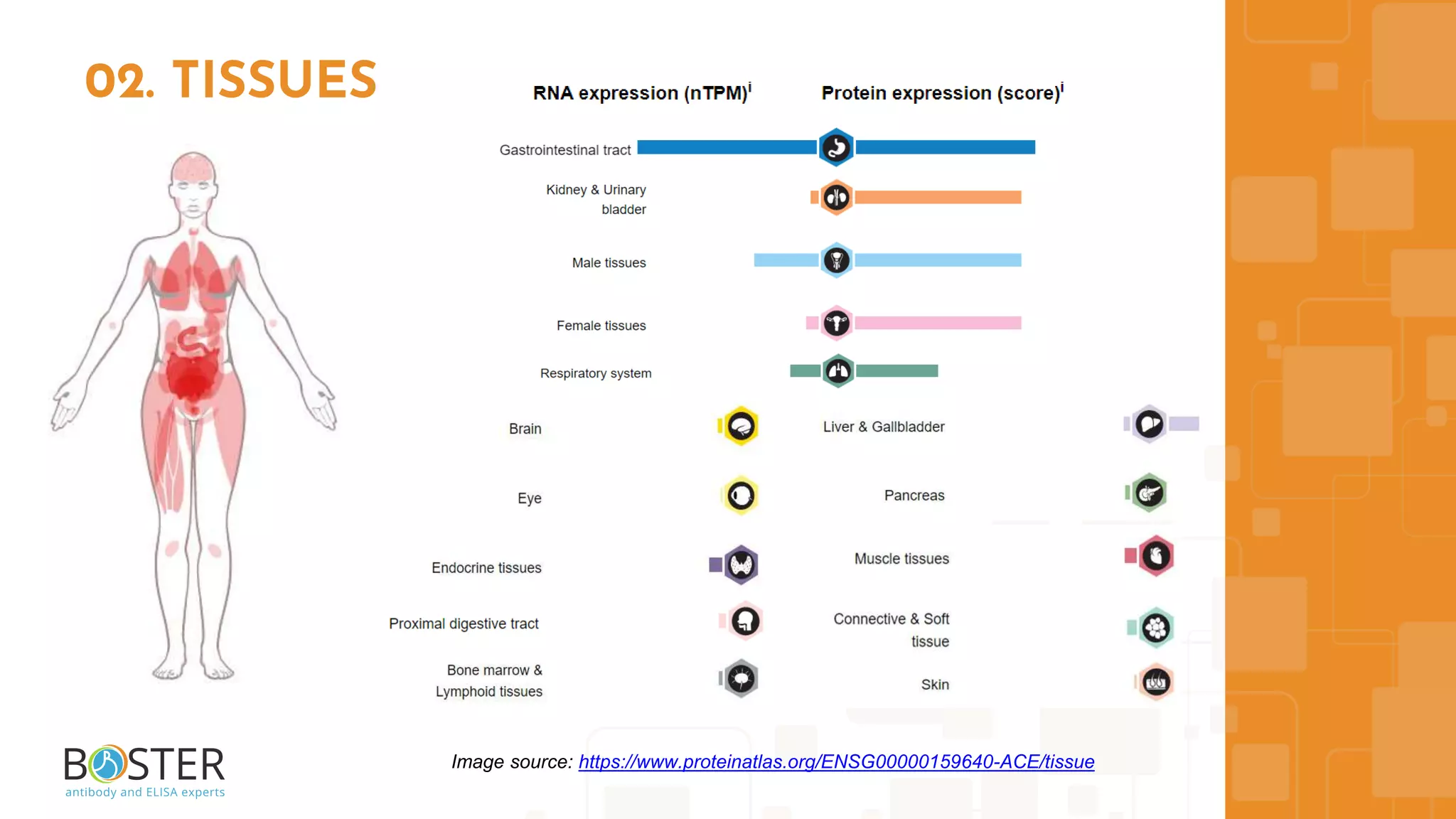The document provides quick facts about angiotensin-converting enzyme (ACE), its function, structure, and role in blood pressure control. It discusses the enzyme's characteristics, expected band sizes for Western blot analysis, and includes a brief history of ACE's discovery and its clinical significance in treating hypertension and other conditions. Additionally, it offers resources for finding ACE antibodies and related research images.






